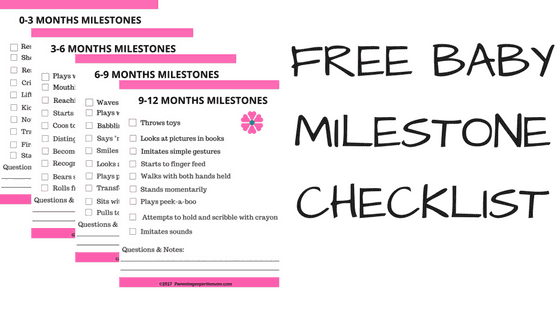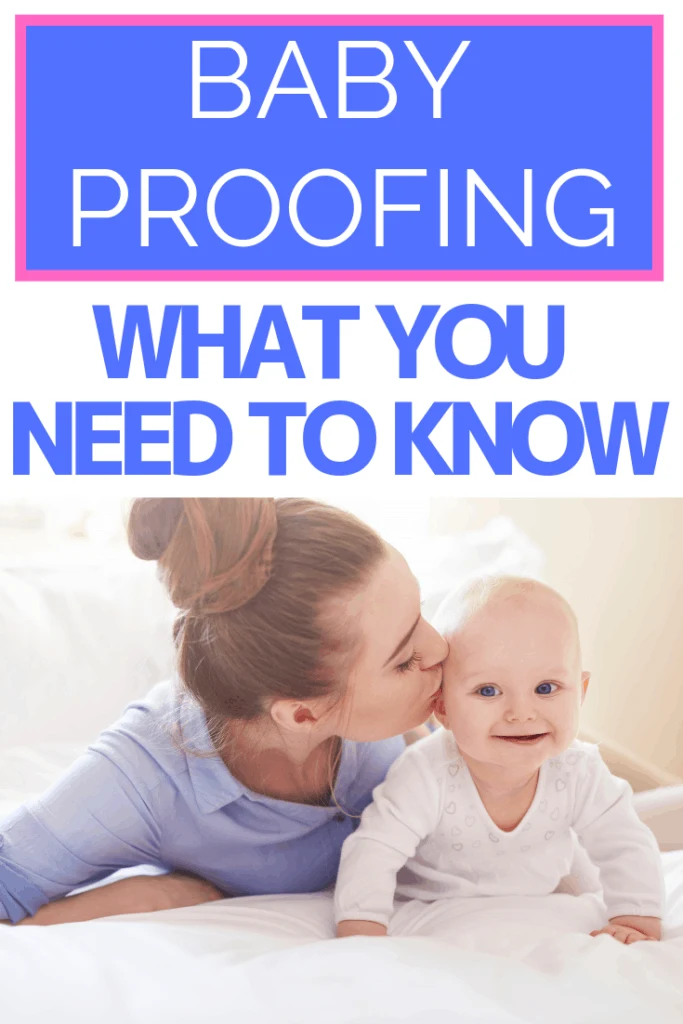Baby proofing is something that everyone should do BEFORE your baby is born and continuously as your baby grows and changes.
What they may not be able to get into at first, they might be able to reach soon.
In order to start baby proofing your home look at it from their perspective. Get down on the floor and crawl around to see what your little one could get into.
You should do this in EVERY room of your house or areas where your baby will be. Look for things that could be choking hazards or things that could be hazards for your baby.

(This post contains affiliate links. To read our full disclosure policy click here.)
Simple Things to Remember When Baby Proofing
TV or Furniture Anchors: Believe me…it will go fast and before your know it your baby will start to pull up on furniture around the house.
Make sure that your TV is secured to the wall and that furniture can not tip over.
Using fasteners (like these for example) help ensure that your little one won’t be able to pull furniture onto themselves.
Outlet Covers: Always keep your outlets covered (you can grab some here.)
Babies and toddlers tend to want to stick things in them which is very dangerous.
If you take one off to plug in the vacuum, make sure you put it back on when your done. It can be easy to forget.
Cupboard Locks: Make sure that all cupboards have child-proof locks (like these) in order to keep your baby out of things they should not be in.
Keep all medicines and chemicals up high in a cupboard with a lock to ensure that your little one does not get into those.
There are also drawer locks (like these) available to keep them out of those as well.
Breakables: Move everything up or put it away!
If there is something you don’t want your little one to have their hands on it may be best to box it up and bring it back out when your child is able to understand safety rules.
Sharp Corners: Corners on the edge of coffee tables or fire places can be hazards to babies just learning to walk or even crawl.
Get them covered with corner covers (like these) to prevent accidents.
Cords: Cords that hang from curtains or blinds need to be out of reach and secured so that your baby can not reach them.
Little ones can get wrapped up in them which can cause lots of trouble.
Gates: Gates (like these) work wonders for keeping your little one of off the stairs.
You can also put them up to keep babies out of rooms that may not have a door but you don’t want your little one to get in to.
Pet Toys: Sometimes things that don’t look like hazards can be especially dangerous. Small cat or dog toys that are left out could be a choking hazard to your child.
Even if the toy itself does not appear dangerous think about what is inside of it.
Is there a jingle bell or a squeaker that could come lose? If so, make sure they are out of your little ones reach and put away.
Toilet: Toilets filled with water can be a drowning hazard to babies. You can either lock the bathroom door to keep them out or use a toilet lock (like this one) to keep them safe.
Houseplants: Some houseplants can be toxic. If you are not sure about the ones you have take a look at this list of poisonous house plants. It may be time to part with them if they are on the list.
Sibling Toys: If there is an older sibling in their house some of their toys may be unsafe to have around a new baby.
Talk to the older sibling about keeping their toys picked up to keep their younger brother or sister safe.
Baby proofing your house may seem like an overwhelming task at first. A great time to do it is before the new baby arrives so that you have plenty of time to get everything ready.
Once you think you have everything baby proofed, get down on your hands and knees for a second look.
If you are looking from your baby’s perspective you may find that you have missed out on something.
Make sure to stop by and join the Mindful Parenting for Babies and Toddlers group on Facebook!

CLICK HERE TO GRAB YOUR BABY 0-12 MONTHS CHECKLIST
Related Posts You Will Enjoy:
50 Simple Ways to Encourage Early Literacy Skills
How to Become an Expert on Your Baby
5 Fun Bath Toys That Encourage Development
One Minute Milestones: How to Encourage Development in Daily Routines


Kayla O’Neill has a master’s degree in education as well as a bachelor’s degree in special education with an emphasis in early childhood education. She has been working as a developmental therapist with babies and toddlers in early intervention since 2012. She is also a mom with two young children.